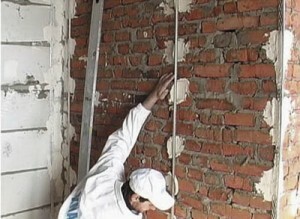Cement-lime plaster - all you need to know about this type of building mixtures
Table of contents
- 1 Especially cement-lime formulations
-
2 Formulation types and features workflow
- 2.1 Types of plaster compositions
- 2.2 application technology
- 3 Output
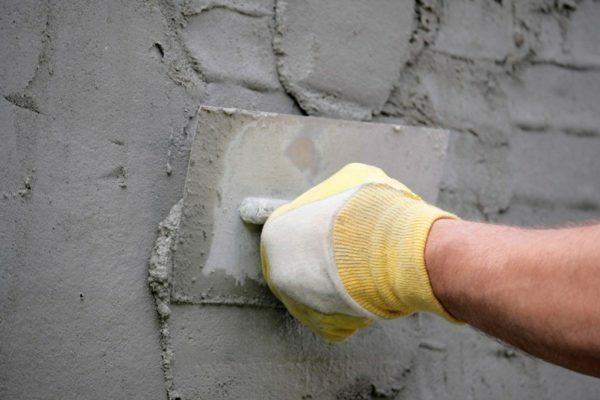
Lime-cement plaster for both interior and exterior work
Today I will talk about the budget option plaster walls using cement lime mixture. We will analyze the composition of characteristics, variations of preparation, and as a bonus, you will learn the correct technique of application of plaster, which is possible even for beginners to masters.

Plaster can quickly align all mineral surfaces
Especially cement-lime formulations
The first thing to understand the major advantages of this group of compounds:
- high ductility. The composition is very useful in application and after drying, has good resistance to cracking. The cement mix plaster walls often crack, but if you add in the lime, this disadvantage disappears;
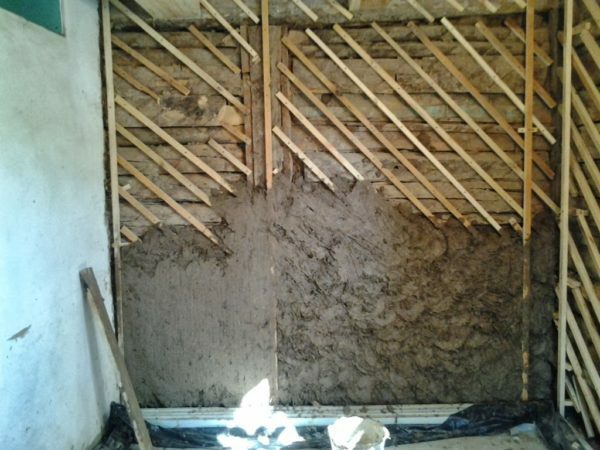
Lime-cement mortar is suitable for even the wooden walls
- excellent adhesion. The solution fits well on concrete, brick, foam concrete, gas silicate, and even a tree. The same cement plasters adhere to the base of a lot worse. The plasticity of the solution greatly simplifies the process and align it on the surface, even if little experience, quite a bit of practice to successfully carry out the work;
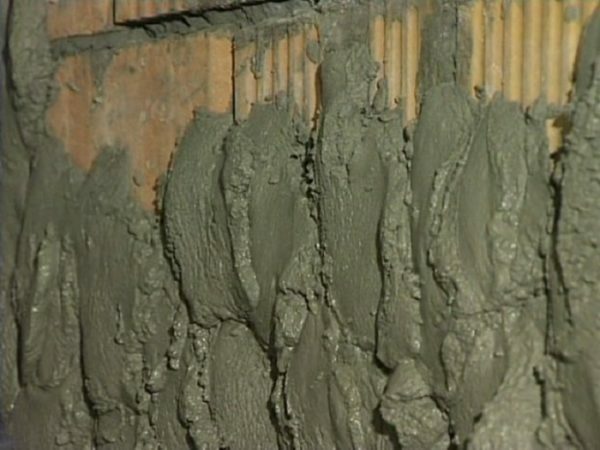
High plasticity simplifies the application of the composition on a variety of surfaces
- high strength. If an ordinary mortar is easily damaged upon impact, the addition of the cement makes the plaster layer is much stronger and more reliable. The composition is not inferior counterparts in dry areas can be practically unlimited. Exterior finish is usually not less than 10 years, is a good indicator;
- Resistance to fungus. The presence of lime gives a plaster layer antifungal properties. Therefore, the composition can be used in rooms with high humidity.
- Ease of application. The composition retains ductility for 2-3 hours, allowing you to work slowly. For example, plaster walls cement-sand mixture or plaster solutions must be carried out much faster due to the fact that the solution starts to set in half an hour, and then after 20 minutes.
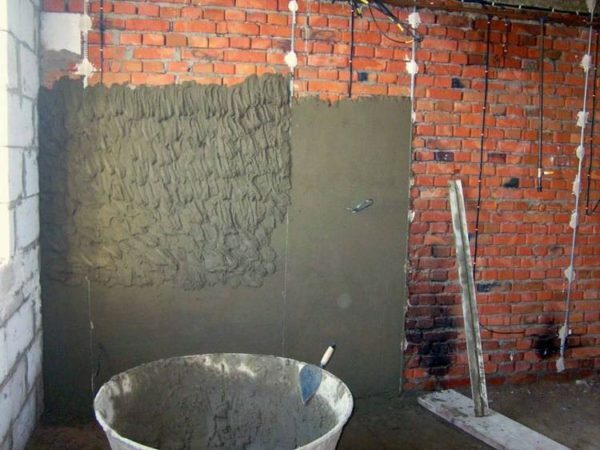
The solution for a long time retains ductility, so you can slowly work
Technical characteristics of cement-lime plaster as follows:
- Frost resistance 50 cycles;
- Application temperature from +5 to +30 degrees;
- The viability of the composition for 2-3 hours;
- Adhesion to the substrate is not less than 0.3 MPa;
- The compressive strength of from 3 to 6 MPa;
- Consumption per square meter at 10 mm from 13 to 18 kg.
Formulation types and features workflow
Cement-lime plaster can be how to prepare yourself, and buy off the shelf. I'll tell you about both options, and then we will discuss how to properly apply makeup on the wall, the same technology and ready for homemade mixes.
Types of plaster compositions
If you prepare a solution with your hands, then you will need the following components:
| Illustration | Description |
 |
Lime. We strongly recommend purchase slaked lime powder lime. It is completely ready to use and has a fine fraction that has a positive effect on the quality of the solution. If you buy an option with quicklime, you'll need to perform additional and not a very nice job of quicklime. In addition to extra work, you spend a lot of time. |
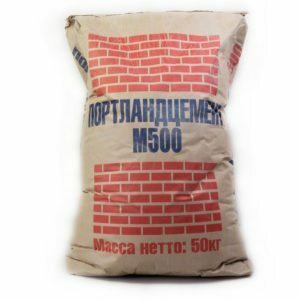 |
Cement. Best brand M-500, but in a pinch you can use the M-400. It is best to acquire the composition in 25 kg bags, they are easier to carry. Choosing cement, focuses on the production date. Composition should be no more than 3 months, as eventually astringent inevitably reduced. |
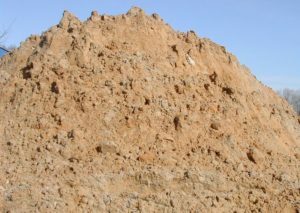 |
construction sand. No special requirements, as long as part of it was not inclusions of clay and plant roots. If necessary, sieving is carried out prior to use to separate rocks and debris. |
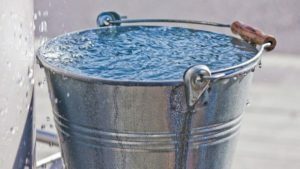 |
Water. We need clean water, and not a liquid out of a ditch or a stagnant lake. The quality of water quality plaster depends a lot, remember this. |
The process of preparing a solution as follows:
| Illustration | Description stage |
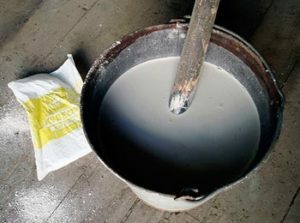 |
Preparing milk of lime. The water is added pushonka and thoroughly stirred to obtain a liquid resembling milk. A bucket takes about 2 kg of lime. |
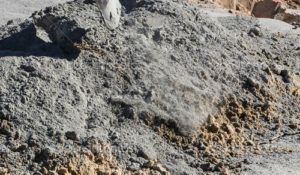 |
Preparing cement-sand mixture. Mixing ratio 1: 4. Try as best you can mix a lot of it to be uniform throughout. |
 |
The components are mixed. The dry mixture of lime milk is added and stirring is carried out. When small amounts of used mixer, and if you need a lot of structure, it is easier to carry out the work of a concrete mixer. As a result, you should get the best of thick consistency. To check the quality of the solution dip into it a spatula: if the blade is still pure, the composition is too thick, if it nalipnet lot of weight - too thin. Ideally, a spatula is a thin layer of mortar, it talks about optimum consistency. |
If the composition of the cement-sand plaster it is necessary to add a plasticizer, in this case, no additives are required.
Plus such options - low price solution, if you buy all the ingredients and prevent their own, the composition will be cheaper in all. The downside is that if you do not exactly comply with the proportions, the characteristics of the different batches can vary, it is not the best way affects the reliability of finishing.
Finished plaster mixture greatly simplify workflow, because you just need to be diluted with water and you're ready to go.
In the market the following brands:
- "Best". The most common version by far. The mixtures have high ductility and ease of alignment due to the use of sand fines. The cost of a 50 kg bag of 175 rubles (important for the spring 2017);
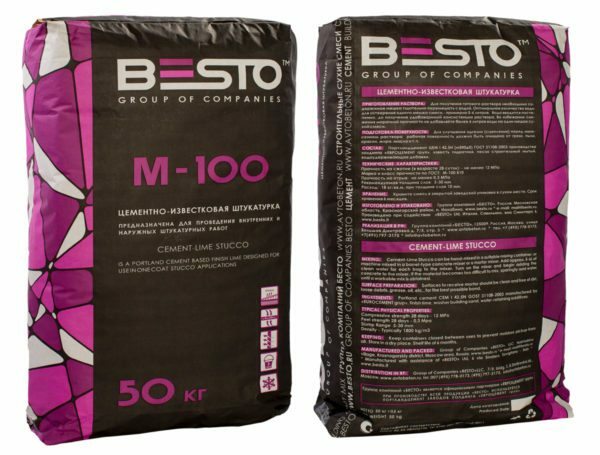
Cement-lime plaster "Best" is used for both internal and for external works
- "Fundamentals Startvell". Very qualitative composition having high strength. Excellent rests on the surface and well kept, even without a reinforcing layer. High moisture repellent properties make it an indispensable option for facades and damp premises. Cost bag weighing 25 kg is 230 rubles;

"Fundamentals Startvell" are high quality, but not cheap
- "Tanilit". This option is most often used by professionals, it is ideal for finishing and for restoration works and fits well even on flimsy grounds. High quality, all of the features at the level, the only negative - a high price for a bag of 25 kg would have to pay 260 rubles.

"Tanilit" has a high performance, but other embodiments loses as low
There are other variants of the compositions, which are spread less. Choosing one or the other mixture as far as possible, consult with a specialist plasterer, so he suggested what the plaster easier to apply.
application technology
To work need the following materials:
- mortar. You can cook it yourself, but you can buy ready-made, for you to decide;
- Primer. Used to strengthen the base;
- Lighthouses plastering. To set the plane of the future walls, exposed lighthouses.

Beacons allow to align the wall quickly and efficiently
Tool for the job:
- rule plaster. Use variations of no more than 250 cm, and preferably even 200 cm. With a little tool is much easier to handle. Commonly used trapezoidal embodiment, made from aluminum profile;
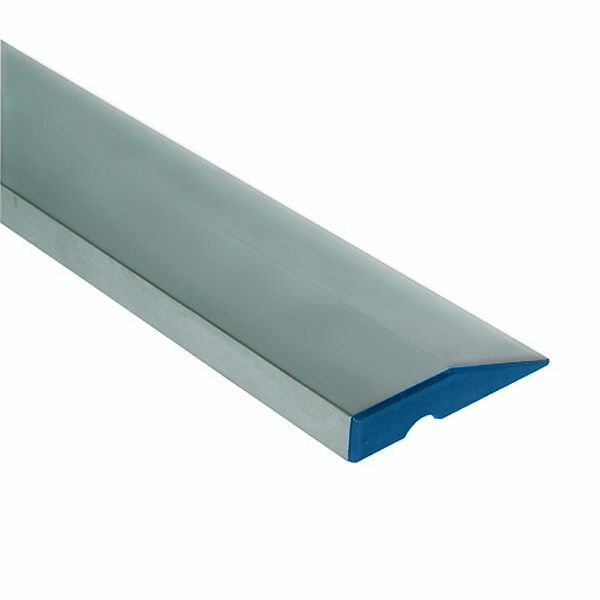
Typically used for leveling a plaster layer on beacons
- Drill with mixer or concrete mixer. The choice of a particular type depends on the amount of work performed. For flats usually suffice and drills, it was convenient to interfere with the solution container at the same time acquire a circular shape, of not less than 50 liters;
- Bucket of plaster. A special device, which is very convenient to apply makeup on the walls. If the bucket is not handy, use a spatula or trowel;

Plaster bucket comfortable sketching out the composition of the walls
- plummet. It is used to control the vertical when installed beacons. Instead plumb laser level can be used, it can work even easier;

Plummet - a simple but very accurate means for controlling the vertical plane
- Grater polyurethane. Used for leveling surface and remove small imperfections.
Tsementnoizvestkovaya plaster is applied as follows:
| Illustration | Description stage |
 |
Preparing a solution for fixing beacons. For this purpose, a small amount of dry mixture is diluted with water and mix. Consistency should be a thickish to beacons fixed securely. If you need to quickly carry out the work, then mount beacons add 1 kg of gypsum per 10 kg solution. Then the composition hardens in just one hour. |
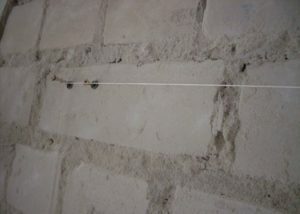 |
With the help of a plumb exposed cords. To do this on each side wall is put three anchors at different heights. Between them stretched the cord, which will define the plane of the future plaster. |
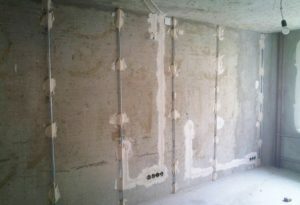 |
mounted beacons. They are set on a cord. The solution was applied in dots with a pitch of 40 cm. The guide is pressed to a desired level, after which the necessary elements to leave the drying solution. In addition, check the plane level, putting it between the beacons. |
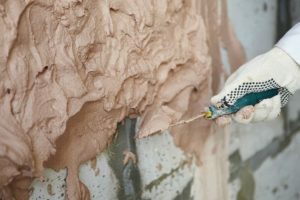 |
On the surface snaps solution. Works is simple:
|
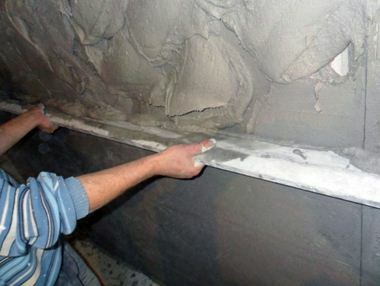 |
The solution aligns rule. When a single-layer application, this step is carried out immediately after the distribution of the composition. In the dual layer - after spraying of the second layer. Usually put on beacons and carried upwards. Excess solution was removed, and the surface leveled. If necessary, the solution was added to individual portions and alignment repeated. |
 |
At least the surface is overwritten. This is done in 4-5 hours after application, but it is possible to carry out the work and the next day. Float moves in a circular motion as shown in the photo. If the surface has dried too much, it can moisten and then carry out the grout. |
Output
Now that you know about all the features of cement and lime plaster will be able to prepare and apply it. Videos in this article will help you understand the topic better, and if something is unclear - ask in the comments.


